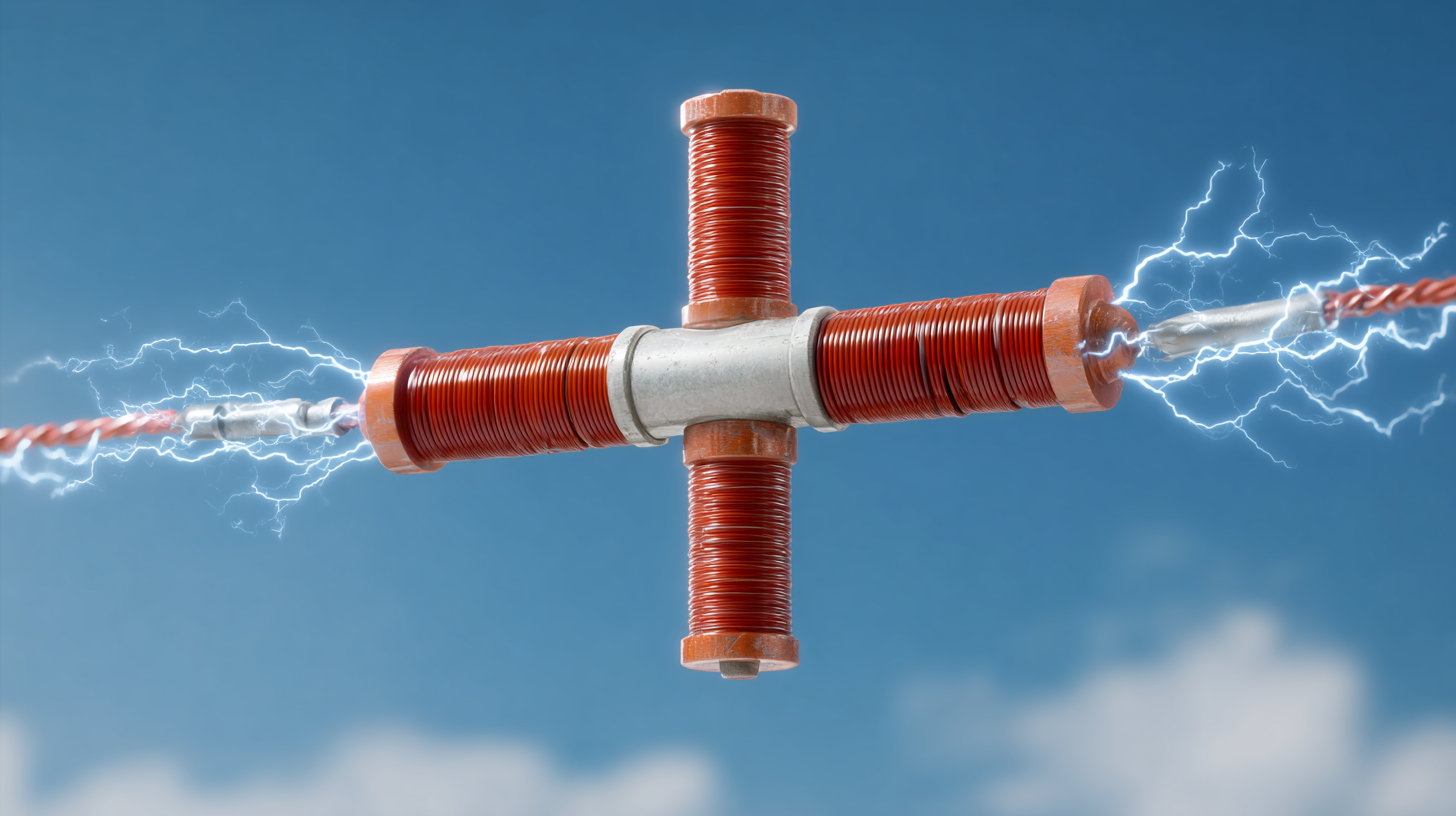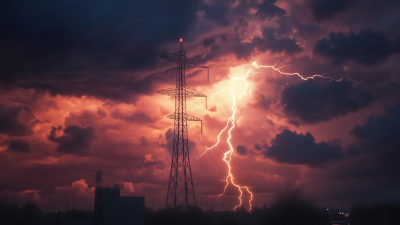
-
Home
-
About Us
-
Products
-
News
-
Blog
-
Contact Us
Leave Your Message

In the realm of modern electrical systems, the significance of High Voltage Fuses cannot be overstated. As electrical networks continue to expand and integrate more complex technologies, the demand for reliable protection against overcurrents and short circuits has surged. According to a recent report by the International Electrotechnical Commission (IEC), the global market for high voltage fuses is projected to grow at a compound annual growth rate (CAGR) of approximately 5.6% over the next five years, driven by the increasing adoption of renewable energy sources and the need for robust grid infrastructure.

High Voltage Fuses play a critical role in safeguarding electrical equipment, ensuring operational continuity, and enhancing safety standards across industries. Understanding their functionality and proper application is essential for engineers and operators to maintain system integrity and optimize performance in today’s dynamic electrical landscape.
 High voltage fuses play a critical role in modern electrical systems by acting as safeguards against electrical failures. Their primary function is to interrupt excessive current flow, protecting sensitive equipment from damage and ensuring operational integrity. In high-density environments, such as data centers, where the reliance on advanced technologies like AI and high-performance computing is growing, the importance of effective circuit protection cannot be overstated. High voltage fuses help to mitigate the risk of catastrophic failures, enhancing both safety and reliability.
High voltage fuses play a critical role in modern electrical systems by acting as safeguards against electrical failures. Their primary function is to interrupt excessive current flow, protecting sensitive equipment from damage and ensuring operational integrity. In high-density environments, such as data centers, where the reliance on advanced technologies like AI and high-performance computing is growing, the importance of effective circuit protection cannot be overstated. High voltage fuses help to mitigate the risk of catastrophic failures, enhancing both safety and reliability.
As applications evolve, particularly in sectors demanding high-performance circuit protection like battery applications, the need for advanced fuses becomes even more pronounced. The introduction of innovations, such as specialized fuses, addresses the challenges posed by increased energy demands and complex electrical architectures. These advancements ensure that electrical systems remain safe and efficient, effectively managing the risks associated with arc flash hazards and other potential electrical failures. Ultimately, the integration of high voltage fuses into electrical systems is essential for maintaining safety and operational effectiveness in today’s fast-paced technological landscape.
High voltage fuses play a crucial role in safeguarding modern electrical systems across various industries. They are essential for protecting equipment from overcurrent conditions that could lead to failures or catastrophic events. The two primary types of high voltage fuses are current-limiting fuses and expulsion fuses, each serving specific functions tailored to different applications. Current-limiting fuses are often used in power distribution systems to minimize damage during fault conditions, while expulsion fuses are typically integrated into transformer protection circuits, allowing for more straightforward repair processes.
In addition to their types, high voltage fuses are also categorized based on their voltage ratings and installation environments. They can be designed for indoor or outdoor use, accommodating the diverse requirements of substations, industrial plants, and renewable energy systems. As industries increasingly adopt automation and smart grid technologies, the demand for reliable protection devices like high voltage fuses continues to grow, highlighting their significance in maintaining system integrity and efficiency.

High voltage fuse systems play a crucial role in ensuring the reliability and safety of modern electrical networks. Evaluating the performance metrics of these fuse systems is essential, particularly as the integration of smart grid technologies and renewable energy sources continues to grow. The latest advancements, such as the concept of a two-stage forming fuse with an interstage spark gap, signify innovative approaches to arching protection and improved operational efficiency. Such developments not only enhance the safety of electrical systems but also allow for better fault detection, ensuring that any shortcomings are swiftly addressed.
Additionally, as the energy landscape evolves with increasing distributed energy resources, it is vital to assess how high voltage fuses can effectively respond to dynamic power conditions. Research shows that robust fault detection methods and machine learning applications can significantly enhance the monitoring and classification of issues in transmission lines. By analyzing real-time voltage and current patterns, we can better understand the performance of high voltage fuse systems, ultimately supporting the overarching goals of safety and resilience in our electrical infrastructure.
| Fuse Type | Voltage Rating (kV) | Current Rating (A) | Breaking Capacity (kA) | Response Time (ms) | Service Life (Years) |
|---|---|---|---|---|---|
| Expulsion Fuse | 15 | 100 | 12 | 10 | 20 |
| Self-Resetting Fuse | 25 | 200 | 16 | 5 | 10 |
| Cutout Fuse | 35 | 400 | 25 | 15 | 30 |
| Current Limiting Fuse | 15 | 50 | 10 | 3 | 25 |
High voltage fuses play a critical role in modern electrical systems, serving as a safety mechanism to protect equipment from overcurrent conditions. The significance of adhering to industry standards and regulations cannot be overstated, as these guidelines ensure the safe and effective operation of high voltage fuses. Regulations set forth by various international and national bodies stipulate performance criteria, testing methods, and installation practices, which are essential to maintaining system integrity and reliability.
As the market for fused disconnect switches is expected to expand significantly, the influence of these regulations becomes increasingly apparent. The anticipated growth from $6.37 billion in 2025 to $10.06 billion by 2032 underscores the industry's response to the need for enhanced safety protocols and performance standards. Compliance with established regulations not only protects users but also boosts the confidence of end-users in the reliability and safety of high voltage electrical systems. This interplay between market growth and regulatory adherence highlights the integral role that standards play in shaping safe operational environments and fostering technological advancements in the sector.
This bar chart illustrates the increasing trend in the number of high voltage fuse installations over the years from 2019 to 2023, highlighting their growing importance in modern electrical systems.
The landscape of high voltage fuse technology is constantly evolving, driven by the demands of modern electrical systems and the push for enhanced safety and reliability. Recent innovations focus on improving the design and performance of these critical components. According to a report by Research and Markets, the global market for high voltage fuses is expected to grow significantly, projected to reach USD 1.6 billion by 2026, owing to the increasing demand for renewable energy sources and smarter grid solutions. This growth highlights the critical role that high voltage fuses play in safeguarding electrical infrastructure.
Emerging technologies such as smart fuses, which incorporate IoT capabilities, are revolutionizing the industry. These advanced fuses can monitor and report their status in real-time, allowing for enhanced predictive maintenance and improved operational efficiency. A study from the Institute of Electrical and Electronics Engineers (IEEE) noted that integrating smart technologies with fuse design can reduce downtime by up to 40%, an essential benefit for industries reliant on continuous power supply.
Tips for choosing high voltage fuses include ensuring compatibility with system specifications and considering the fuse's rated voltage and current capacity. It's also advisable to look for fuses with advanced features like thermal and overload protection to enhance system reliability. Additionally, staying updated with the latest technological advancements can help you make informed decisions tailored to your operational needs.





